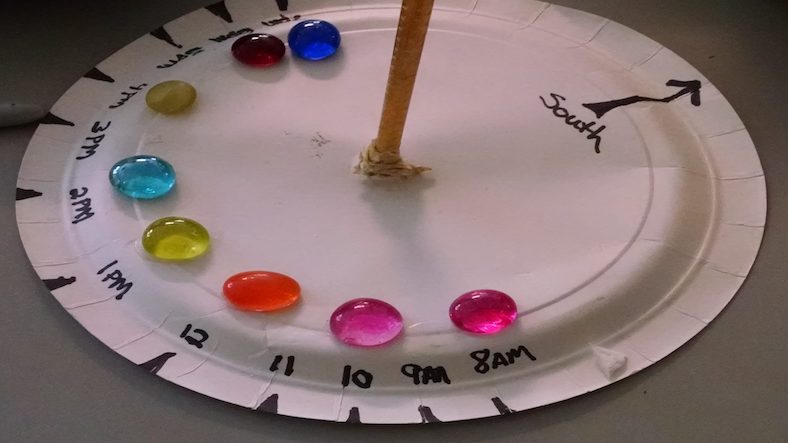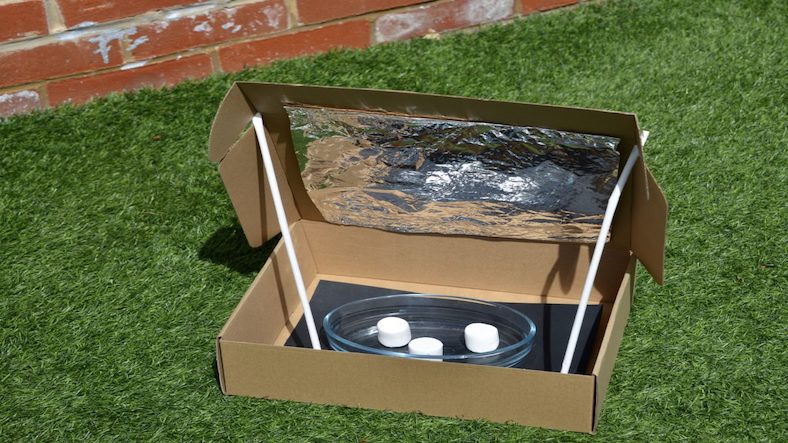For thousands of years, people used the sun and shadows to tell time. Long before clocks and watches were invented, ancient civilizations relied on a simple tool called a sundial. A sundial uses the sun’s movement across the sky to create shadows, and these shadows help us estimate the time of day.
In this fun and easy science activity, children will build their own sundial, observe how shadows move, and understand how the sun’s position changes throughout the day. This experiment encourages hands-on learning, observation skills, and curiosity about the natural world.
What Is a Sundial?
A sundial is one of the oldest time-keeping devices in the world. It consists of a flat surface with hour markings and a stick called a gnomon. When sunlight hits the stick, it creates a shadow. As the sun moves from east to west, the shadow also moves. The shadow points to different hour marks, helping us tell the time.
A sundial works because:
- The earth rotates.
- The sun appears to move across the sky.
- Shadows change direction and length throughout the day.
This makes sundials a great way to learn about science, astronomy, earth’s rotation, and history—all in one activity!
Materials Needed
You only need a few simple materials:
- Paper plate or round cardboard
- Pencil or pen
- Ruler
- Compass (or any circular object for tracing)
- Small stick or wooden dowel
- A clock or watch
- A sunny outdoor spot
These materials are safe, affordable, and easily available at home or in school.
Step-by-Step Procedure to Make a Sundial
Follow these steps to create a working sundial:
1. Introduce the Idea of a Sundial
Start by explaining the basic idea:
- Sundials use sunlight and shadows to measure time.
- The stick in the center casts a shadow just like a tree or building.
- The shadow’s position changes as the sun moves.
This helps children understand why they are building the sundial.
2. Prepare the Materials
Gather all your materials in one place. Make sure the paper plate or cardboard is flat and sturdy, because the sundial needs to stay still.
3. Draw a Circle
Place a compass or circular object (like a bowl) at the center of the plate. Trace a neat circle. This will become the hour marking area of your sundial.
4. Mark the Center
Use a pencil to mark the center point. This is where you will insert the stick later.
5. Draw the Noon Line
Use a ruler to draw a straight line from the center to the edge of the circle. This line represents 12:00 noon.
For kids, explain:
When the sun is at its highest point in the sky, it is noon. The shadow at this time is the shortest.
6. Mark the Hour Lines
Divide the circle into equal sections for hour markings:
- Mark 6 AM on the left side of the noon line.
- Mark 12 PM (noon) on the line you drew.
- Mark 6 PM on the right side.
If you want to be more accurate, you can divide it into more hours, but for kids, simple markings work well.
7. Place the Sundial Outside
Find a sunny area with:
- No shade from trees or buildings
- A flat surface
- Safety for children to observe
Place the sundial horizontally on the ground or a table.
8. Align It to True North
Use a compass or online tool to find true north.
This step helps the sundial show more accurate time.
Align the noon line so it faces north.
9. Insert the Stick
Push the stick or wooden dowel straight into the center point.
Make sure it stands upright and doesn’t lean. A leaning stick will give wrong shadow readings.
10. Observe the Shadow
Now the fun part begins!
Look at:
- Where the shadow falls
- How long the shadow is
- How the shadow changes position as time passes
Use your watch or phone to check the current time and compare it with your sundial’s shadow.
11. Repeat at Different Times of the Day
Come back every few hours to check:
- Has the shadow moved?
- Is it longer in the morning and evening?
- Is it shortest at noon?
Children will understand:
- Shadows are long when the sun is low.
- Shadows are short when the sun is high.
- The direction of shadows changes throughout the day.
Google Ad 1
What Children Learn From This Experiment
This simple experiment teaches many important concepts:
1. Earth’s Rotation
The shadow moves because the earth rotates around its axis.
2. Position of the Sun
The sun appears to move across the sky, rising in the east and setting in the west.
3. How Ancient Clocks Worked
Civilizations like Egyptians, Greeks, and Indians used sundials thousands of years ago.
4. Observation Skills
Kids learn to observe, compare and record information.
5. Thinking Scientifically
They ask questions like:
- Why is the shadow moving?
- Why is it shorter at noon?
- Why does it point in different directions?
These are key skills in science learning.
Safety Tips for the Activity
- Make sure the location is safe for children.
- Avoid crowded roads or hot surfaces.
- Don’t let kids stare directly at the sun.
- Adult supervision is recommended, especially for younger children.
How to Make the Sundial More Accurate (Optional)
If you want to turn this into a more advanced project:
- Mark the hours by observing the shadow every hour of a full sunny day.
- Use a protractor to adjust the stick to your location’s latitude.
- Paint or decorate the sundial to make it weather-friendly.
This can turn into a long-term science project for older kids.
Why This Experiment Is Important
Children love hands-on activities. This sundial experiment:
- Builds curiosity
- Improves understanding of natural science
- Connects history, astronomy, and physics
- Encourages outdoor learning
- Provides a break from screens and digital devices
Most importantly, it shows children that science is everywhere, even in the shadows around us.
Conclusion
Making a sundial is a wonderful and educational project for kids, teachers, and parents. It is simple, fun, and teaches powerful scientific ideas using just sunlight and a stick. By observing how shadows move throughout the day, children can understand how people told time in ancient days and how the earth’s rotation affects our daily life.
If you want more Science, Technology, DIY experiments, and learning activities, don’t forget to read and subscribe to PeoplesBLOG for exciting new content.















